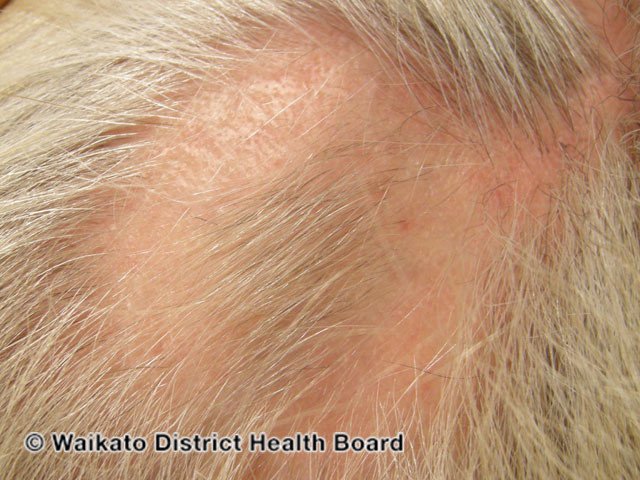
Intralesional and Intramuscular Steroid Injection
An example of alopecia with hair regrowth after successful treatment with triamcinolone injection.
Credit: DermNet NZ
Introduction to Intralesional and Intramuscular Steroids
Corticosteroids like Triamcinolone (Kenalog) play a vital role in the treatment of various skin conditions, particularly those that may not respond well to topical treatment. Here's an overview of this medication, its applications, and potential side effects:
What is Triamcinolone (Kenalog)?
Triamcinolone is a synthetic corticosteroid with anti-inflammatory properties. It is commonly used in dermatology to treat conditions that involve thick lesions or inflammatory processes located too far under the skin for topical medications.
Conditions Treated with Triamcinolone
Triamcinolone can be used to treat a wide range of conditions, including:
Alopecia Areata: An autoimmune disorder that causes hair loss.
Inflammatory Acne Cysts: Deep infections in the skin.
Lupus: Chronic autoimmune disease affecting various body parts.
Keloids and Hypertrophic Scars: Overgrown scar tissue.
Granuloma Annulare: Chronic skin condition forming circular rashes.
Lichen Planus & Lichen Simplex Chronicus: Inflammatory skin conditions.
Psoriatic Plaques: Scaly patches from psoriasis.
Eczema: Chronic skin condition causing inflammation and irritation.
Application Method
Triamcinolone is prepared and diluted into saline suitable for injection. The application method depends on the specific situation:
Intralesional Injection: Directly into a lesion on or immediately below the skin.
Intramuscular Injection: Into the deltoid muscle if there are many lesions or if the condition is too widespread.
Duration and Intent
The treatment effect lasts about 6-8 weeks, with the aim that the condition will be more manageable with topical medications afterward.
Potential Adverse Effects
Triamcinolone injections can cause both early and delayed side effects, including:
Dimple or Divot: A common reaction at the injection site, possibly permanent.
Skin Lightening: Especially in people with more pigmentation in their skin.
Blood Sugar Increase: If you're diabetic and receive an intramuscular injection.
Bone Fragility: Rarely, it can cause skeletal issues like increased bone fragility.
Similar to Oral Steroids: Other side effects mimic those of oral steroids.
Conclusion
Triamcinolone represents an important treatment option for numerous inflammatory skin conditions that are resistant to topical therapies. Understanding its applications and potential side effects is crucial for both clinicians and patients. Consultation with an experienced dermatologist ensures that this treatment is applied in a manner best suited to the individual's condition and overall health.
